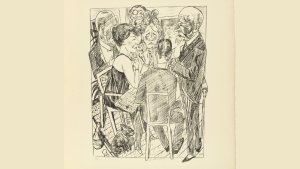As part of an International Economy symposium, INET Research Director Tom Ferguson assessed the challenge facing central bankers through the lens of the missing virtues of Dorothy’s travel companions in the Wizard of Oz
Central bankers today irresistibly bring to mind the Wizard of Oz. not just because of all the barely disguised political and economic cognates Frank Baum stuffed into his classic—William Jennings Bryan as the cowardly lion, “Oz” as an abbreviation for an ounce of gold, and so on. No, it’s the characters’ missing virtues that grab me: a heart, a brain, and courage. Central bankers today lack all three.
First, the brain. Two generations ago, almost every economist knew what a catastrophe a deficiency of effective demand could create. And in a real crunch, they knew what to do about that. They realized you couldn’t push on a string, so somebody—the government—had to borrow and spend when private markets would not. From the 1980s on, though, the fundamental Keynesian point—the Principle of effective Demand—disappeared in a cloud of statistical double-talk that, when you deconstruct it, turns out to imply estimating potential output as a lagged function of whatever foolish policy is being pursued.
Central bankers didn’t take this giant step backwards to pre-Keynesian economics by themselves. In that sense, it’s unfair to say they have only themselves to blame. But they swallowed it whole, helped subsidize it, and cheered it on. Now that they have rediscovered that monetary policy can’t levitate a broken economy, except by beggaring the neighbors, it’s time they admitted their errors and stopped acting like they could control everything. They could also admit what Gerald Epstein and I pointed out in the December, 1984, Journal of Economic History, based on the evidence of the Great Depression: that if you cut rates to zero and the yield curve collapses, banks get squeezed and financial instability increases. It’s amazing how many economic historians writing about the Great Depression since then missed that simple point.
Next, courage. In the good old days, central bankers were given to heady talk about “taking away the punch bowl” before the party really got going. That may have been mostly rhetoric, but it at least paid lip service to some value bigger than banking. Contrast the Fed and the European Central Bank in recent decades. The European Central Bank barely moved a muscle as banks in the center moved wave after wave of money to the European periphery in the heady run-up to 2007–2008. The failure to take even a baby macro-prudential step to restrain the capital flow, along with the purely political decision to treat every country’s debt the same, were crucial in bringing on the disaster that is still unfolding in the eurozone. Ditto the Fed, waiving details, under Greenspan and Bernanke, especially in regard to real estate lending. They just kept cheering on deregulation, until the whole world collapsed. Is it any wonder so many people no longer trust “experts”?
Finally, a heart. The European Central Bank aided and abetted the move to throw the costs of the bank crisis onto the unsuspecting populace of Europe. That was quite a trick: to have the states assume the debts then start beating gongs about excess debt. The Fed took risks to save the banking system, but is already telling us we are close to full employment and professing to be alarmed about “inflation,” when anyone can see that banks, insurers, and pension funds are clamoring for rate rises, just as in the 1930s. Both institutions need to start thinking about someone besides the financial community. If they don’t, I do not doubt that we will not have seen the last of the anger that Donald Trump and Senator Bernie Sanders mobilized in such disparate ways in the United States, nor the upheavals now visibly threatening the European Union’s very existence.
This piece was first published in International Economy magazine’s symposium New Tools for Central Bankers? Ferguson’s views expressed here are his own







